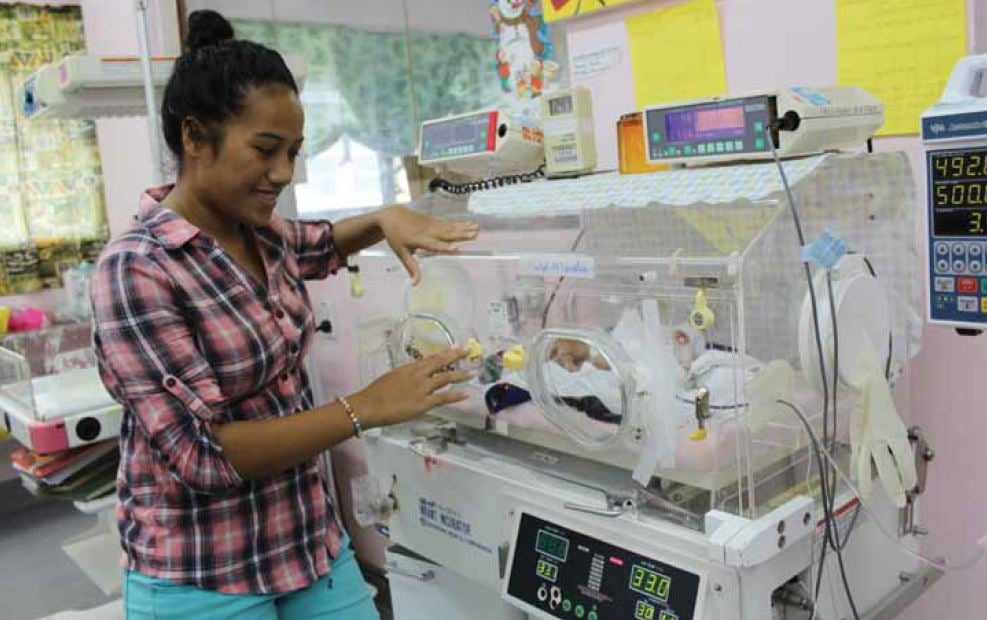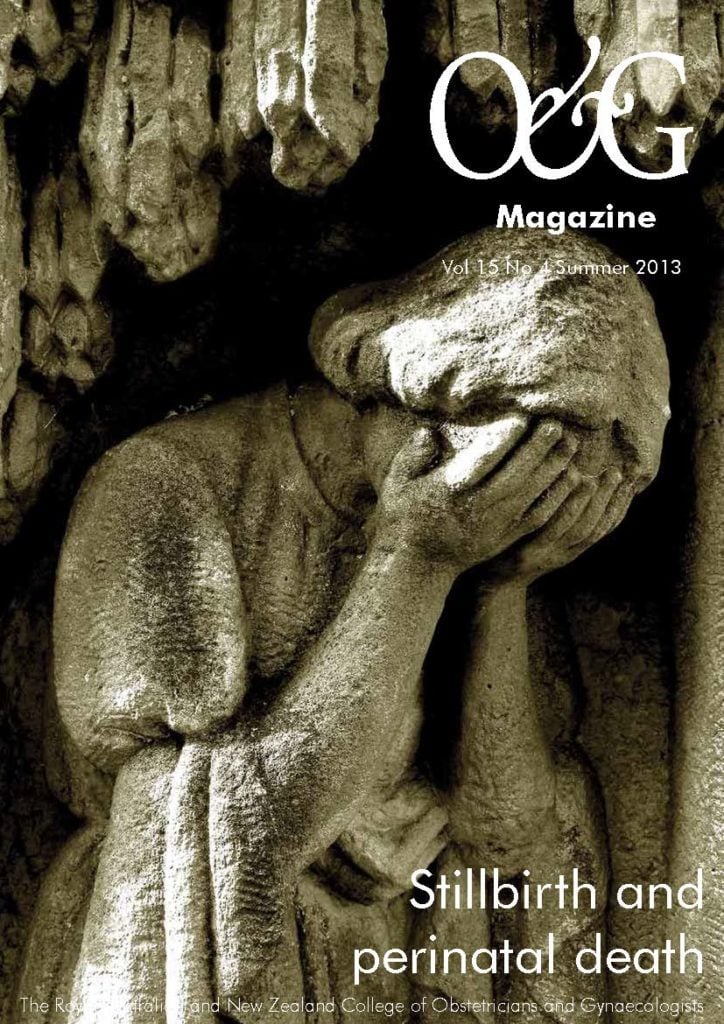What does the stillbirth rate tell us about the quality of clinical maternity care?
Stillbirth rates remain high in many of the Pacific island countries. Compared to rates of 2.9 and four per 1000 births for Australia and New Zealand, the rates for Tonga, Fiji and Samoa are nine, 13 and ten, respectively. The World Health Organisation reports a steady decline in stillbirths in the Western Pacific region from 17.2 to 10.2. This progress is promising, but not good enough. Fiji, Vanuatu and the Solomon Islands have higher rates than the regional average. In 2011, the Lancet’s Stillbirths Steering Committee concluded that the causes of stillbirths are inseparable from the causes of maternal and neonatal deaths. They suggested that many of the third trimester stillbirths and neonatal deaths could be prevented by scaling up care for mothers and babies at the health system level.
The Steering Committee recommended that emergency obstetric care has the greatest effect on reducing maternal and neonatal deaths and stillbirths. Syphilis detection and treatment has moderate effect, but is of lower cost and is highly feasible. Advanced antenatal care – including induction of post-term deliveries and detection and management of hypertensive disease, fetal growth restriction and gestational diabetes – will further reduce mortality, but at a higher cost. The committee notes that in settings with stillbirth rates of between 15 and 24.9 per 1000 births, the priority to increase coverage of advanced antenatal care services and high-quality comprehensive emergency care. They go on to say that the interventions are best packaged and provided through linked service delivery methods tailored to suit existing healthcare systems.
Many of the health systems in the Pacific are seriously challenged by limited resources and this has been exacerbated by political uncertainties. There are major issues in obtaining regular essential supplies of consumables, health infrastructure is inadequate and there are major human resource shortages.
There are several high-impact initiatives that are feasible in this uncertain context. One of the specific interventions recommended by the Lancet expert panel is the improvement of the skills and knowledge of healthcare providers. This is required throughout the health system in order to reduce delays in the provision of quality life-saving care. This up-skilling is required in a range of clinical areas, including family planning counselling, advocacy for early booking and antenatal, intrapartum and postpartum care. The sophistication of clinical skills required will vary, but should include skills in ultrasonography as dating of pregnancies and recognition of growth restriction are significant causes for morbidity and mortality.
We wish to provide initial reports from two clinical audits being undertaken. One is from Vaiola Hospital in Tonga, which is the major referral hospital in the country and where most of the deliveries occur. The hospital delivers about 2500 babies per year and has a stillbirth rate of nine per 1000 births. The other is from Figi: the second-largest referral hospital in the country delivers about 4100 babies per year and has a stillbirth rate of 15 per 1000 births. This hospital has a local catchment area of about 100 000, but provides tertiary-level care for approximately 40 per cent of Fiji’s population. About 5000 deliveries occur in five subdivisional level hospitals. All high-risk cases are transferred to the referral hospital.
These audits have highlighted several issues. Most of the stillbirths in both institutions occur late in the third trimester and in the pre-partum period. Clinical notes are poor and relevant data for review difficult to retrieve. No uniform criteria are used for classifying the stillbirths.
Given the proven benefits of perinatal reviews in improving maternal and neonatal care, there is an urgent need in the Pacific to develop a standardised reporting mechanism to record all perinatal deaths. A systematic review of these deaths may provide more reliable information about the best-value interventions to improve the quality of maternal and neonatal services in the Pacific. The tool developed by the Perinatal Society of Australia nd New Zealand (PSANZ) could be modified for this purpose.
The PSANZ tool may not be uniformly applicable throughout the Pacific. It would be easier to capture data from health institutions. In the larger countries, such as Fiji, Samoa and Tonga, most deliveries occur in health facilities, whereas in countries such as the Solomon Islands and Vanuatu the situation is different. Capturing data for babies not born in health facilities would pose an almost impossible challenge. However, there are tools available for capturing critical data even in this situation.
A strong argument can be made to develop a standardised reporting package for stillbirths in the Pacific island countries. Such a package would include a uniform data collection sheet, such as the one developed by PSANZ, but modified for use in the Pacific, and some centralised data processing unit hosted by either RANZCOG or the Pacific Society for Reproductive Health. The analysis of the data will provide valuable information regarding effective interventions to improve maternal and child health. Many international funding agencies have targeted the maternal and child health aspects of the Millennium Development Goals and the Post-2015 Development Agenda. There is recognition that monitoring and evaluation of progress requires good-quality data that demonstrate effectiveness of interventions and also help identify remaining challenges that need to be addressed.

Comprehensive audit programs can have a positive impact on healthcare systems and, in turn, decrease the maternal and neonatal mortality rate as well as reduce the number of stillbirths.






Leave a Reply